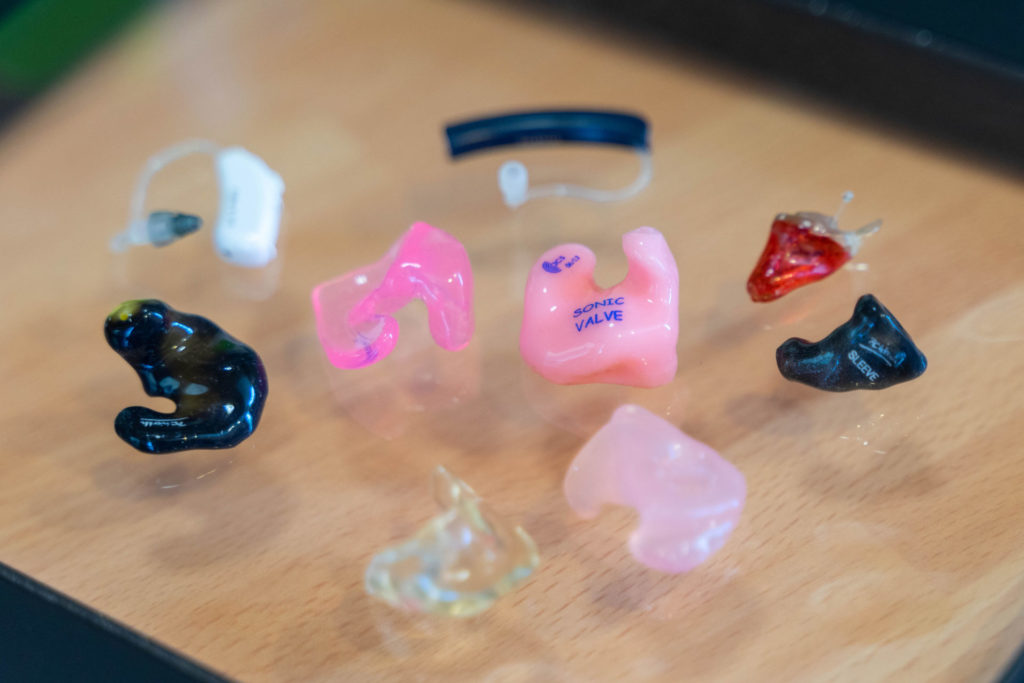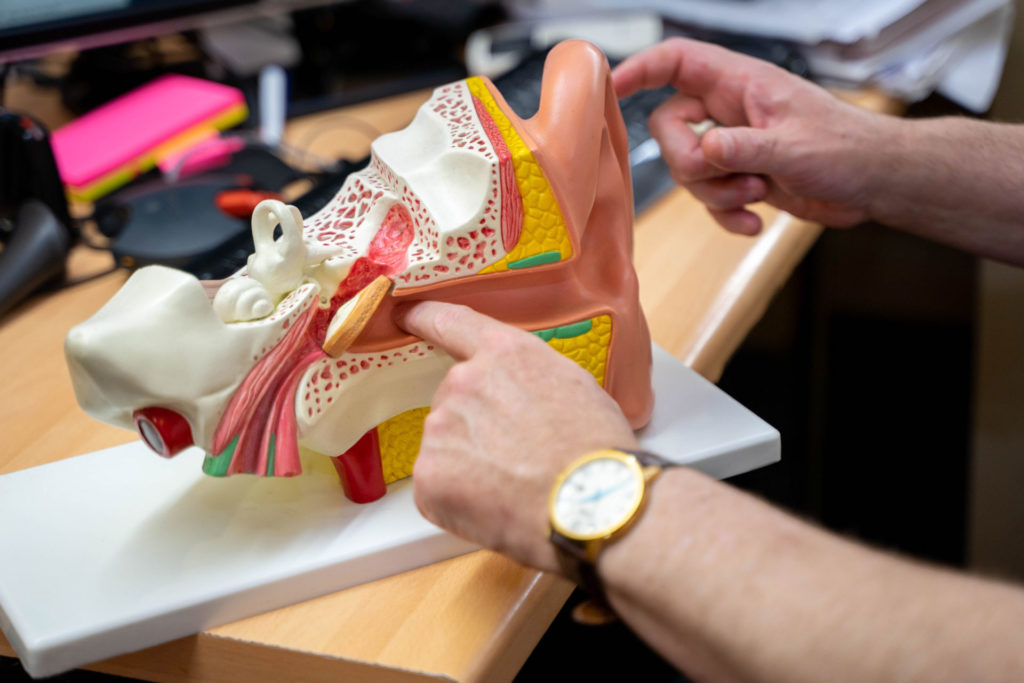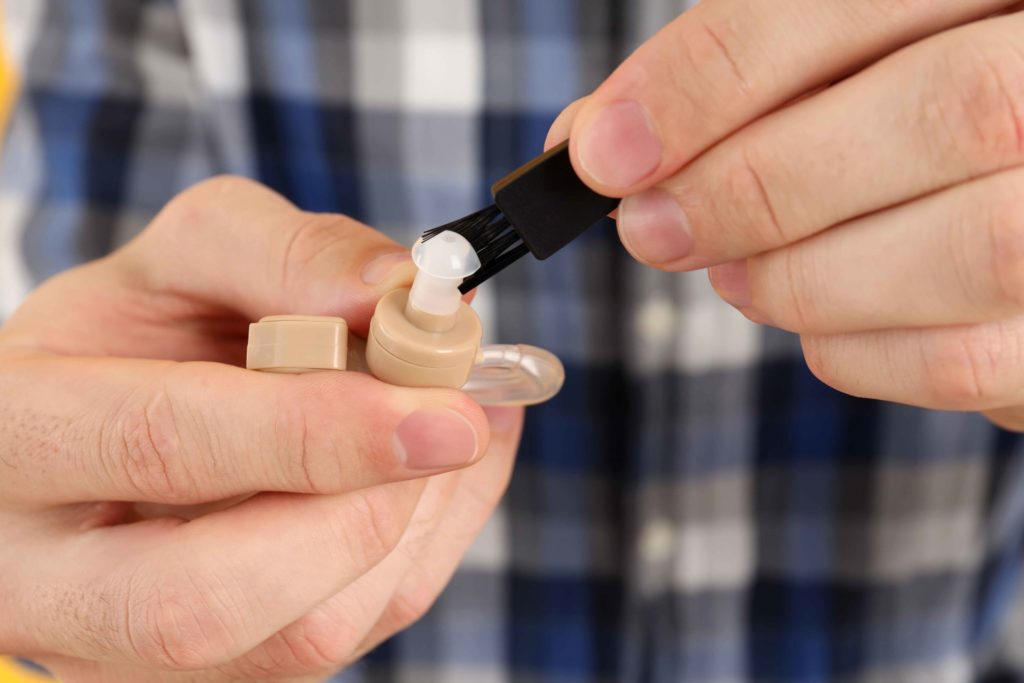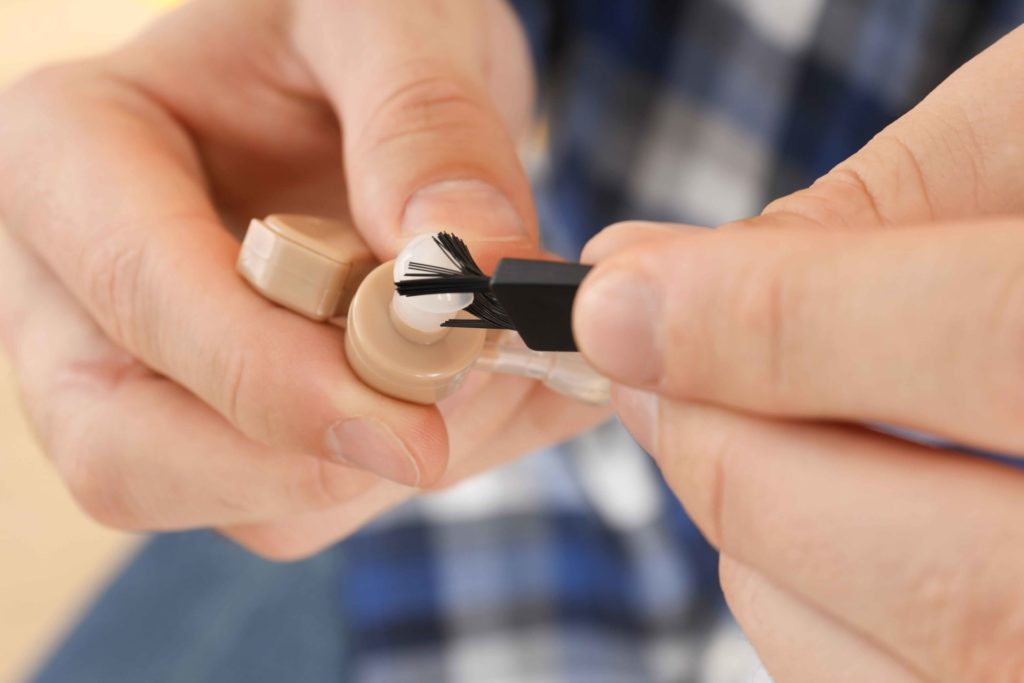How to clean hearing aids
Hearing aids are some of our most advanced technology however, despite their revolutionary technology, they can still build up dirt and bacteria within the ear. It’s important to remove this build-up before it starts affecting your hearing, ear health or the hearing aid itself. You can use various techniques to clean your hearing aid to ensure all the dirt is removed without damaging any components of your hearing aid.
In this blog, we will be exploring these techniques to help you keep your ears clean and hearing healthy in addition to keeping your hearing aid at its best performance. We understand there are various types of hearing aids so we will also be recommending different techniques based on what type of hearing aid you may be using.
Importance of cleaning hearing aids
Our ears continually build up oils and dead skin, and because of this, our hearing aids also build up a moderate amount of various bacteria, making it very important to clean your hearing aids after a long period of wear. If hearing aids are not cleaned, you may be more prone to ear infections which could affect your hearing after a period.
Hearing aids should also be cleaned to retain their hearing quality. If a hearing aid is blocked with ear wax and other debris, it can cause a blockage to the microphone meaning you may start experiencing quieter sounds or an intercepted transmission that can lead to whistling in your hearing aid.
If you do find any issues with your hearing aid and are concerned, it could be to do with the cleanliness of your hearing aid. We have a blog on the most common hearing aid problems. You may find there is another issue affecting your hearing aid rather than any dirt built up.

What to avoid when cleaning
There are various things you should avoid when cleaning your hearing aids as you can cause accidental damage which could compromise the function of your hearing aids, leaving you with impaired hearing until you can get them repaired.
All hearing aids require the same equipment when cleaning and therefore, what needs to be avoided is often the same for each hearing aid. Here are some of the most notable things to avoid when cleaning your hearing aids.
Avoid excess water
If you are choosing to clean your hearing aids using lukewarm water and soap it’s important to make sure you don’t use too much water. Any excess water can seep into the hearing aid components and cause damage.
This damage could lead to a component needing a replacement, or even the whole hearing aid. For this reason, it is best to use a small amount of water mixed with soap and then use a cloth to wipe.
Avoid cleaning your hearing aid over a hard surface
Due to their size and intricate components, hearing aids are rather fragile and should be handled with care. When cleaning your hearing aids you should ensure you are not above a hard surface or at risk of dropping them from a standing height.
Whether you are using water or wipes when cleaning your hearing aid, it can be a delicate task and there is always a chance you may drop them; especially if the hearing aid or your hands are moist.
If you do happen to drop your hearing aid on a hard surface there is a high chance that it could damage a component or the entirehearing aid. This then leads to the requirement of a repair or a replacement of the hearing aid(s).
Avoid cleaning your hearing aids with wipes containing alcohol
You can use a range of different tools or supplies when cleaning your hearing aids. A popular choice is to use a cleaning wipe, however, it is important that you check any wipes used do not contain alcohol. Alcohol can corrode and damage the surfaces and plastic materials used within the hearing aid.
If you do happen to use alcohol, check your hearing aids for any damage or corrosion. You may find that the quality is impaired once using them after cleaning. Consequently, you may find yourself purchasing a new component for your hearing aid or a whole new replacement. So always ensure any wipes you are using do not contain alcohol, we recommend antibacterial wipes to clean hearing aids.

Tips for cleaning hearing aids
Although there are best methods to use when cleaning your hearing aids depending on their style and design. There are also some other factors to consider before or during the process of cleaning your hearing aids. These include:
Ensure there is no moisture inside the hearing aid before you begin cleaning
If your hearing aid already contains some moisture before the cleaning process, any excess water or moisture could then damage components inside the hearing aid. Instead, leave your hearing aid out to dry and return later when everything has fully dried. Do not try to rush this process by blowing air onto the hearing aid as the heat could melt the plastic or damage various components.
Make sure any brush tools or multifunctional tools have clean brush heads before cleaning.
Many hearing aids will be supplied with a multifunctional tool to help you when your hearing aids need cleaning. These tools will have a brush head that can be removed and replaced. Before cleaning it is important to make sure this brush head gets replaced so that no bacteria is being brushed back into the hearing aid. Even a clean-looking brush head can reintroduce bacteria back to a hearing aid from a previous clean.
After inserting a hearing aid cleaned with an already used brush, there is a higher chance of you developing an ear infection, which if worsened, can also impair your hearing, so it is better to not risk the chance of infection when possible.
Replace your wax filter and microphone protector every six months
Hearing aids will be provided with a wax filter but it is important to make sure this is replaced every six months to avoid a build-up of wax, which may penetrate the hearing aid and block components, in addition to increasing the chances of an ear infection. You can often find wax filters in your local pharmacist or drug store.
Some hearing aids are supplied with a microphone protector and this is also a feature that should be replaced every six months. These are used to block off pieces of ear wax and debris from entering the device. Therefore, prolonging the replacement of these components can increase the chance of an ear infection or blockage of earwax, affecting the performance of the hearing aid.

Best methods of cleaning
Here are the recommended methods cleaning of hearing aids based on the type and fit. If you are unsure about the different types of hearing aids then we recommend you read our blog explaining the different types of hearing aids in more depth.
Behind the ear – BTE
Behind the ear hearing aids are simple hearing aids to clean. Begin by removing any wax filters or microphone protectors attached to the hearing aid and gently clean around the microphone and outer areas of plastic. Avoid scrubbing the hearing aids, but do check there is no debris or wax left on the hearing aid. This hearing aid is best cleaned with an antibacterial wipe. Within the link, you can find an instructional video on how to clean BTE hearing aids.
Inside the ear – ITE
ITE hearing aids are best cleaned with a multifunctional tool as it can reach inside the sound outlet. Remember to change the brush head before cleaning to stop any previous bacteria going back into the hearing aid. This tool can also be used to clean the ventilation as well, in this link you can find a video showing you how to clean your ITE hearing aid. There are also additional tips on how to change your wax filter.
Receiving in Canal – RIC
RIC hearing aids are best cleaned with an antibacterial wipe around the outside of the hearing aid, particularly around the two openings at the back of the hearing aid which are the microphones. You can also clean out and replace the filter if it has been a period of six months or sooner if you see any discolouration or damage. In the link, you can find more detailed instructions on how best to clean your RIC hearing aid.

Book an appointment today
If you are still finding issues with your hearing aids and are unsure of a solution or are still not confident in cleaning them yourself. You can book an appointment with us today and we can take a look at any issues in addition to giving your hearing aids a full clean.
Click the link above to book an appointment through our website or call us at 0800 781 0422
Get in touch
If you’re concerned you may have a problem with your hearing, or you’d like to arrange a hearing test for a family member, we’re here to help.
Nathan Gluck Hearing Care,
20 Wentworth Road,
Golders Green, London,
NW11 0RP, UK